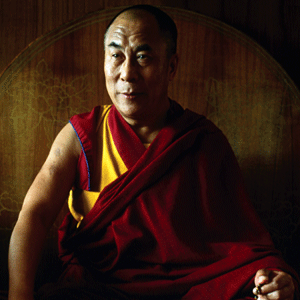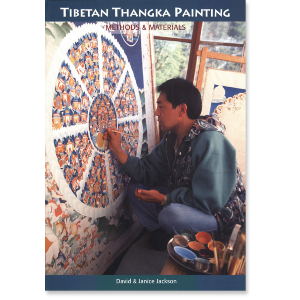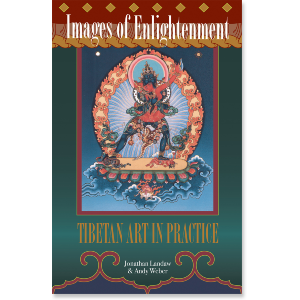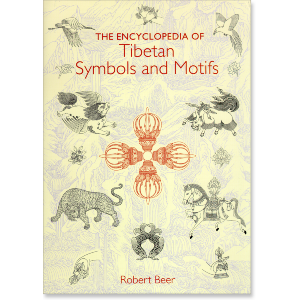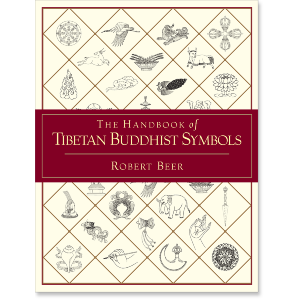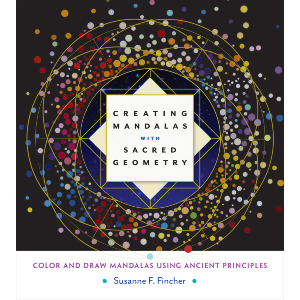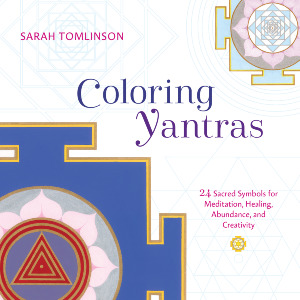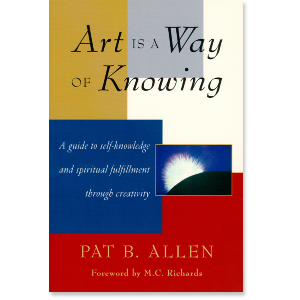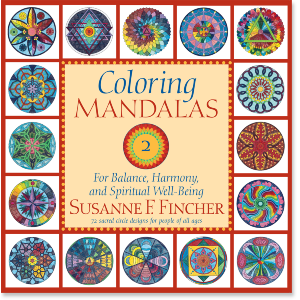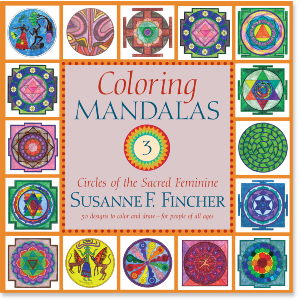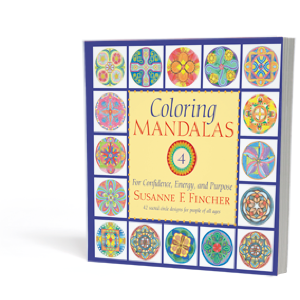| The following article is from the Autumn, 1990 issue of the Snow Lion Newsletter and is for historical reference only. You can see this in context of the original newsletter here. |
The Art of Mask Making
By Pema Losang Chogyen
The mask-making tradition is one of the oldest existing Tibetan art forms. A great variety of materials and techniques may be employed, depending on the uses for which the mask is made. The most common technique, that of cloth mask-making, allows the artist to create the intricate detail necessary for ornate mythological beings and other complex figures. For this reason the cloth mask is especially employed for religious ceremonial dances and contemporary performances.
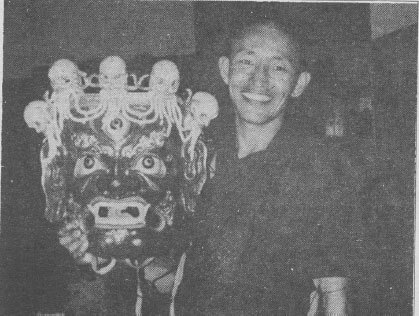
Ven. Pema Losang Chogyen holding the traditional cloth mask.
Most cloth masks are made almost twice the size of a human face and are frequently adorned with headdresses that make them look even bigger. Despite the size and detail, this kind of mask is lightweight and relatively inexpensive to produce. Consequently the art of cloth mask-making continues to be widespread, although modem materials may be substituted for the traditional ones, depending on convenience and availability.
How to make a traditional Tibetan cloth mask
The mask-making process involves five major steps:
- Sculpting a mold
- Forming the mask over it
- Securing the shape of the mask
- Adding ornamental details
- Painting the mask.
Sculpting a mold
This complex process begins with the creation of a mold for the mask on a strong wooden board of the same width as the desired mask. First, a rough outline of the mask is drawn on the board to maintain the desired size during the modeling. The mold is then sculptured over the drawing, in potter's clay that is softened by adding thirty percent fine sand. This is done to ensure that the mold may be easily broken when removing it from the mask. To prevent the mold from cracking and shrinking, it is wrapped in damp cloths, and only upon completion is the mold allowed to dry.
Forming the mask over it
The next step is to cover the clay mold with a layer of rice paper that will separate the mold from the mask. Small strips of rice paper cut into elongated triangle shapes are carefully applied to the clay surface without overlapping. A weak glue is used so that the paper will not stick permanently to the mold. In a similar manner, five or six layers of thin cloth are next applied. Frequently a different color of fabric is used for each layer to ensure the consistency of thickness; otherwise the mask may lose the precision of its shape. For this process a stronger glue is used, which strengthens the overall structure.
Securing the shape of the mask
Once the application of the fabric layers is complete, the mask is allowed to dry, and the underlying mold is then broken and removed. To preserve the shape of the mask, a supporting frame is attached to its inner edge. The frame is made of a strip of bamboo, heated to make it pliable and then shaped to fit the mask. Once cool, the bamboo retains its shape and provides a strong, lightweight support. The frame is then bound to the mask with strong twine that is passed through holes punched in the frame and the mask.
Adding ornamental details.
Now the details are added. The entire surface of the mask is carefully covered with a smooth thin layer of a special mixture consisting of equal amounts of paper pulp finely mashed rice paper and fine sawdust moistened with strong glue. This material gives strength to the mask and also provides a medium with which to sculpt fine ornamental details. Tibetan rice paper, which is thicker, softer, and much lighter than regular rice paper, provides lightweight strong adherence, while sawdust gives a pliable working medium as well as strength when it is dry. Artists find this medium very workable and convenient. Projecting embellishments, such as headdresses and other ornamentation, may be first formed in a wire frame and attached after being worked in great detail.
Painting the mask
Finally, the mask is painted elaborately with the desired colors. Many artists use primary colors to give the mask a bright and striking appearance; however, the use of color varies tremendously depending on the artist's preference. Water-based pigments are traditionally used, as this was the only painting medium employed by Tibetan artists until the middle of this century. As a final touch a coat of clear varnish is applied to protect the paint, which also gives the mask a glossy and fresh look. Gold leaf may also be applied to the ornaments, imparting the luster and beauty of solid gold.
Changes to the Cloth Mask-making Process when using Modern Materials.
Although all Tibetan cloth masks are constructed by following the process just described, recent changes may be noted particularly in the use of materials. Oil-based paint is frequently used to replace traditional water-based colors; in this case the varnish is not used. Stronger and more accessible modern glues are also replacing the traditional adhesive mixtures. More adaptations and improvements in materials can be expected, marking a period of change in this centuries-old tradition.

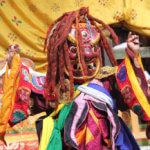
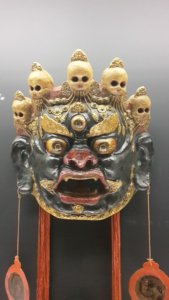
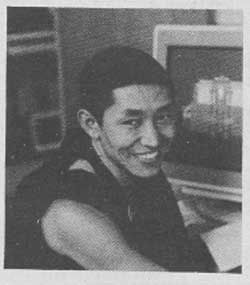 Ven. Pema Losang Chogyen was born in 1957, in Nyenkar, Tibet. Ven. Chogyen entered Namgyal Monastery in 1970 and began his studies in Buddhist philosophy, practice and the arts. In 1986, Ven. Chogyen received the monastery's highest degree, the Master of Sutra and Tantra, in the first division (equivalent of highest honors). Starting in 1986, he served as a teacher of mandala and ritual arts, giving textual and analytical as well as artistic instruction. In 1981, Ven. Chogyen began accompanying
Ven. Pema Losang Chogyen was born in 1957, in Nyenkar, Tibet. Ven. Chogyen entered Namgyal Monastery in 1970 and began his studies in Buddhist philosophy, practice and the arts. In 1986, Ven. Chogyen received the monastery's highest degree, the Master of Sutra and Tantra, in the first division (equivalent of highest honors). Starting in 1986, he served as a teacher of mandala and ritual arts, giving textual and analytical as well as artistic instruction. In 1981, Ven. Chogyen began accompanying 